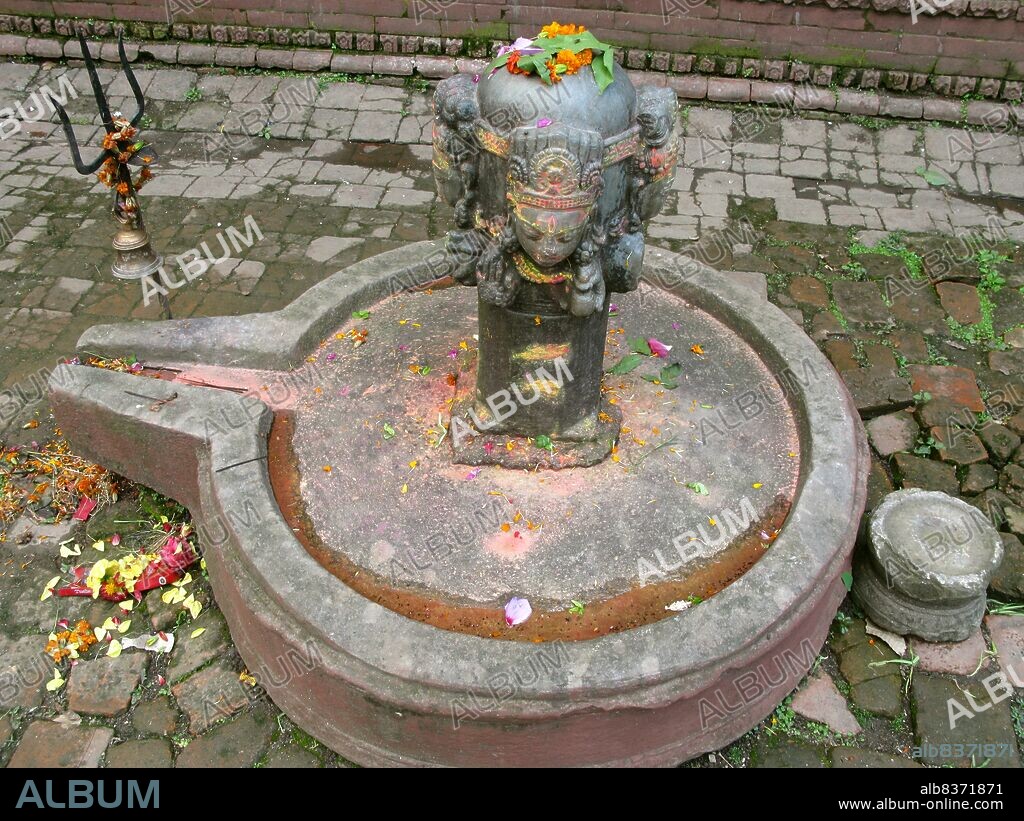alb8371871
Nepal: A four-faced Shivalingam sits atop a yoni< / i> (symbol of the Hindu Goddess Shakti or Devi), Kathmandu (2008)

|
Zu einem anderen Lightbox hinzufügen |
|
Zu einem anderen Lightbox hinzufügen |



Haben Sie bereits ein Konto? Anmelden
Sie haben kein Konto? Registrieren
Dieses Bild kaufen.
Nutzung auswählen:

Titel:
Nepal: A four-faced Shivalingam sits atop a yoni< / i> (symbol of the Hindu Goddess Shakti or Devi), Kathmandu (2008)
Untertitel:
Siehe automatische Übersetzung
The lingam, or linga, meaning 'mark' or 'sign', represents the penis and is an aniconic representation of the Hindu deity Shiva used for worship in temples. Although most Hindu sculpted images (murtis) are anthropomorphic, the aniconic Shiva linga is an important exception. The lingam is often represented with the Yoni, the aniconic symbol of the goddess.
. Yoni (literally 'vagina' or 'womb') is the symbol of the goddess Shakti or Devi in Hinduism. Within Shaivism, the sect dedicated to the god Shiva, the yoni symbolizes his consort.
. Yoni (literally 'vagina' or 'womb') is the symbol of the goddess Shakti or Devi in Hinduism. Within Shaivism, the sect dedicated to the god Shiva, the yoni symbolizes his consort.
Bildnachweis:
Album / Universal Images Group / Rainer Krack / Pictures From History
Freigaben (Releases):
Bildgröße:
5066 x 3800 px | 55.1 MB
Druckgröße:
42.9 x 32.2 cm | 16.9 x 12.7 in (300 dpi)
Schlüsselwörter:


 Pinterest
Pinterest Twitter
Twitter Facebook
Facebook Link kopieren
Link kopieren Email
Email
